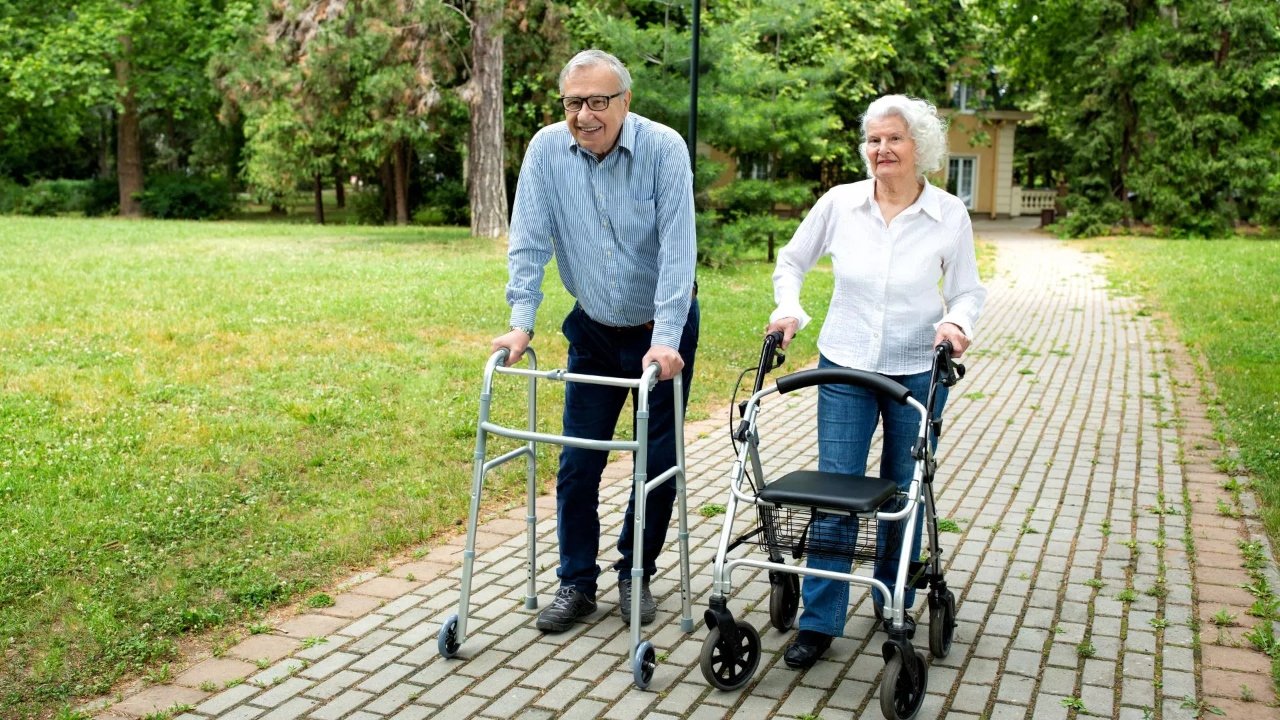When it comes to selecting a walking aid, seniors often face the decision of choosing between a cane and a walker. While both are beneficial in their own right, walkers are generally considered the better option for individuals who need extra stability, support, and safety. In this article, we’ll take a closer look at why walkers are often a better choice than canes, offering enhanced mobility and reduced risk of falls.
1. Extra Support and Stability
The primary advantage of choosing a walker over a cane is the level of support and stability a walker provides. Canes are typically used by individuals who only need support on one side of their body. While this works well for some, it may not provide enough balance for those with more serious mobility issues. A walker, on the other hand, offers support on both sides, giving a more stable and secure base.
Walkers are equipped with four legs or wheels, which provide more points of contact with the ground, distributing weight more evenly and reducing the chances of falling. For seniors who experience frequent dizziness, leg weakness, or balance problems, a walker is much more beneficial as it offers better stability and more support while walking.
2. Better for Limited Mobility
Seniors with limited mobility or those recovering from surgery often find walkers to be more comfortable and effective than canes. While a cane may suffice for those who are able to walk with minimal assistance, walkers provide extra stability for those who need additional support. A walker makes it easier to take steps, especially for individuals who have trouble lifting their feet or who have weakened leg muscles.
Walkers also allow seniors to walk longer distances without tiring quickly. With the right walker, individuals can navigate longer corridors, go on walks in the park, or attend social events with less effort. For seniors with arthritis, hip pain, or knee issues, walkers make it easier to stay mobile and active for longer periods.
3. Reduced Risk of Falling
Falls are a major concern for older adults, as they can lead to serious injuries and long-term complications. The risk of falling increases with age due to factors like reduced strength, balance issues, and joint pain. Walkers help reduce the risk of falls by providing a sturdy, reliable point of contact with the ground.
Unlike canes, which only provide support on one side, walkers have four points of contact, making them more stable. This additional support is especially important for seniors who have difficulty balancing or are prone to falling. Walkers help seniors maintain their balance, even on uneven surfaces or slippery floors, reducing the likelihood of falls and preventing injuries.
4. Support for Sitting and Standing
Another significant advantage of walkers over canes is the extra support they provide when seniors need to sit or stand. Some walkers are equipped with built-in seats, allowing seniors to take breaks when needed. These seats are especially helpful for seniors who tire quickly or experience fatigue during physical activity. Having a place to rest can make it easier to complete errands, walk longer distances, or enjoy outdoor activities.
Walkers also offer support when standing up from a seated position. Seniors who have trouble getting up from chairs, sofas, or beds can use the walker as a handhold to help push themselves up, reducing the strain on their knees and back.
Conclusion
While both canes and walkers are effective mobility aids, walkers generally provide more support, stability, and safety, especially for seniors with significant mobility challenges. Walkers help reduce the risk of falling, provide better balance, and make walking more comfortable and manageable. For those with limited mobility, recovering from surgery, or dealing with joint pain, a walker is often the better option. By choosing the right walking aid by Gilani Engineering, seniors can improve their mobility and continue living an independent, active life.








